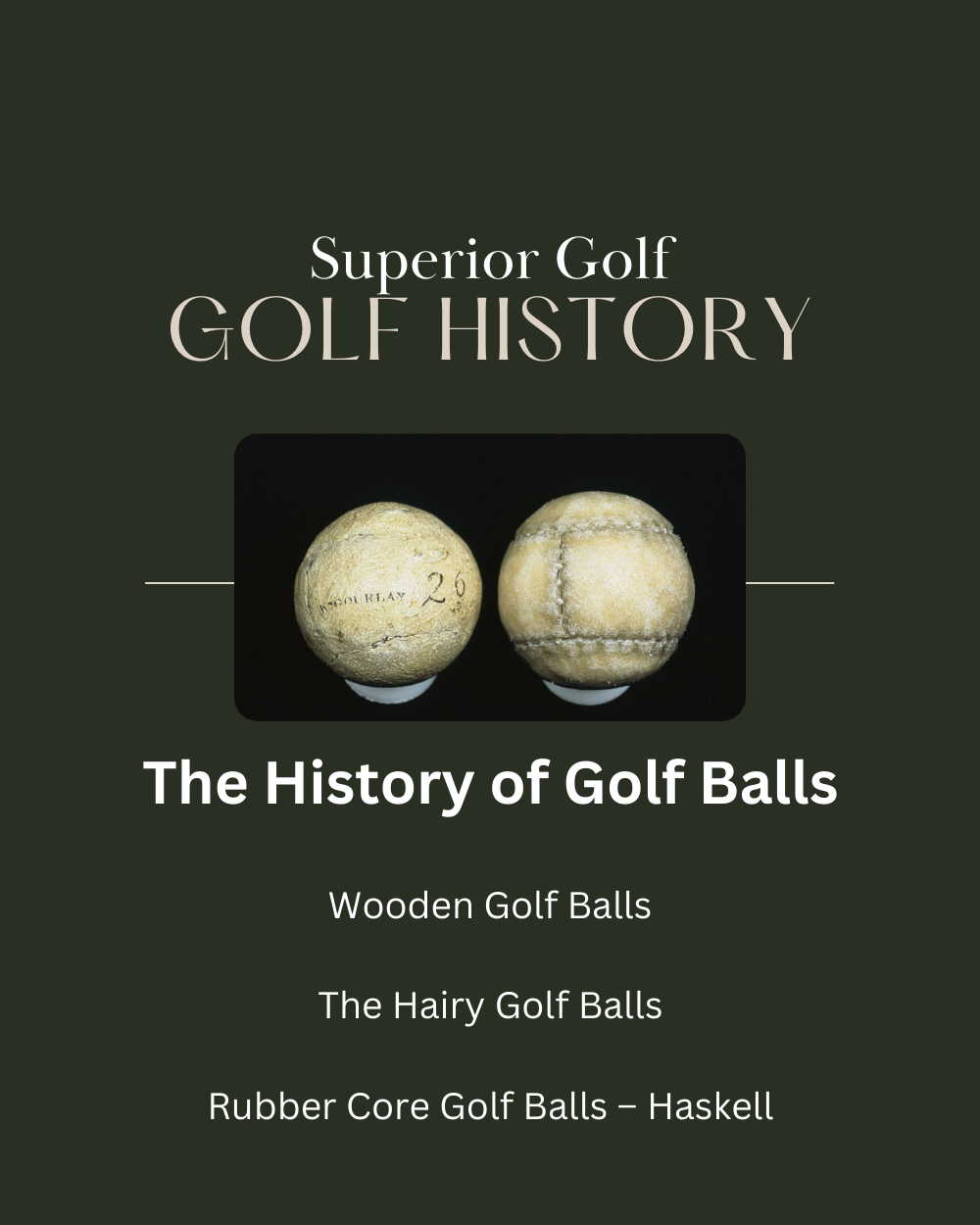The History of Golf Balls mirrors the game’s evolution. From the 14th century to now, golf balls have changed a lot. First came wooden balls. Then, in 1618, the leather-stuffed featherie balls were made. They flew farther thanks to their design1. The Gutta-Percha, or ‘guttie’ ball, appeared in 1848. It was cheap and flew well, made from the sap of the Malaysian sapodilla tree12. In 1898, Coburn Haskell introduced the rubber core ball. This design improved with dimples for better flight1.
Allan Robertson and Tom Morris played big roles in the featherie era. Then, the 1960s brought new materials like Surlyn and urethane. They made golf balls last longer and perform better. These advancements led to two-piece, three-piece, and even four-piece balls, each for different play styles1. Moving from old materials to synthetic resins marked a big step in historical golf equipment. It improved speed, distance, and control over the ball’s flight path.
The History of Golf Balls Key Takeaways
- The evolution of golf balls dates back to the 14th century, beginning with wooden balls.
- Featherie balls, introduced in 1618, were made with goose or chicken feathers, providing improved flight characteristics1.
- Gutta-Percha balls, created in 1848, marked a milestone in affordability and aerodynamics12.
- Coburn Haskell’s 1898 invention of the rubber core ball introduced dimple patterns for enhanced flight1.
- Modern materials like Surlyn and urethane, introduced in the mid-1960s, revolutionized golf ball covers and performance1.
The Early Beginnings of Golf Balls
The history of golf balls starts back in the 14th century. It shows us how golf materials have changed over time. We’ll look into the early days of golf balls.
Wooden Golf Balls
The first golf balls were made of hardwoods like beech and boxroot in the 14th century. They began in Scotland, setting the stage for early golf1. Though not like today’s high-tech balls, they introduced design and engineering to the sport1. Their performance was limited by the materials and methods of the time. Yet, they were crucial in the game’s beginnings1.
The Hairy Golf Balls
After wooden balls, ‘hairy’ golf balls appeared from 1486-1618. They were filled with cows’ hair or straw and covered in leather1. In 1452, the first golf ball sale was recorded. This shows how the game started to grow commercially2. Made first in the Netherlands around 1484, and then in Scotland, these balls were a big leap toward modern designs2. They were more affordable, making golf more accessible to many players2.
| Era | Material | Characteristics |
|---|---|---|
| 14th Century | Wood | Limited performance, foundational for the sport |
| 1486-1618 | Leather filled with cows’ hair or straw | Affordable, improved accessibility, transition towards modern design |
The change from wooden to hairy golf balls shows the creativity and flexibility in the early game. It led to more innovations12. By knowing about these early versions, we can see how far golf balls have come.
The Evolution of Golf Balls
Learning about golf balls’ evolution shows how golf changed over centuries. Each stage, from featherie balls to modern ones, brought big improvements. These changes affected how golf balls look and perform.
Featherie Golf Balls
Featherie golf balls started in 1618, changing the game big time. They were made by putting feathers into a leather pouch. This made the ball fly farther and more reliably. Yet, making them was hard work. Only about four balls could be made each day by a skilled person3. Despite their high cost and hard-to-make nature, they were popular for more than 200 years1.
The Gutta-Percha Ball (Guttie)
In 1848, Dr. Robert Adams Paterson invented the Gutta-Percha ball. This ball was a huge step forward. It was made from the sap of the Sapodilla tree from Malaysia14. This ball was cheaper and lasted longer. It had a textured surface which made it fly better1. With this ball, more people could play golf. It also let players hit the ball further and control it better4.
Learn more about the Gutta-Percha ball evolution.
Rubber Core Golf Balls – Haskell
In 1898, Coburn Haskell introduced the rubber core golf ball. This changed the game again. These balls had a rubber core covered with a rubber or balata shell. They flew better and bounced more than Guttie balls3. The Haskell ball became the new standard for many years because of its great performance4. Today, materials like Surlyn and urethane make golf balls even better. They help players hit further and control the ball’s spin1.
Discover the ongoing advancements in golf ball technology.
Conclusion
The story of golf balls is a journey of tradition and innovation. From simple wooden balls to today’s high-tech spheres, every step has helped make the game better. The gutta-percha ball in the 1800s made golf affordable for many5. Then, the Haskell ball in 1898 brought more distance and control5. Today, balls like the Titleist Pro V1 are loved by players all around5.
Temperature affects how far golf balls go. A study showed that hot golf balls fly further, with 152°F balls going the longest6. Warmer balls perform better6. This is key for playing your best game in different weather.
Today’s golf ball tech not only boosts how well you play but also cares for the planet. Recycling gives us eco-friendly balls like the Pro V1 and TP5x5. Golf balls keep getting better, showing the sport’s spirit of improvement. Choosing the right ball can up your game and the fun you have on the course.
Looking at golf ball history, we see a mix of respect for the past and excitement for new discoveries. Modern golf balls cater to all types of players, thanks to science and new materials. Golf keeps evolving, and the ball is a big part of its history and its future. Visit Golfmagic for more on how temperature affects ball performance.
FAQ
What is the historical timeline of golf ball development?
What were the earliest golf balls made of?
What were ‘hairy’ golf balls?
How did the featherie golf ball improve the game?
What are Gutta-Percha balls and their significance?
How did Coburn Haskell revolutionize golf balls?
What advancements occurred in golf ball technology in the mid-20th century?
What are some examples of modern high-performance golf, balls?
How have design changes in golf balls impacted the game?
Source Links
- https://golfcollege.edu/evolution-golf-ball/
- https://golfsupport.com/blog/a-brief-history-of-the-golf-ball-1cf65d/
- https://www.foundgolfballs.com/pages/history-of-the-golf-ball
- https://blog.mortongolfsales.com/the-evolution-of-golf-balls/
- https://cleangreengolfballs.com/blogs/news/the-evolution-of-golf-ball-technology-from-featheries-to-modern-marvels
- https://2016aklishevich.weebly.com/conclusion.html

